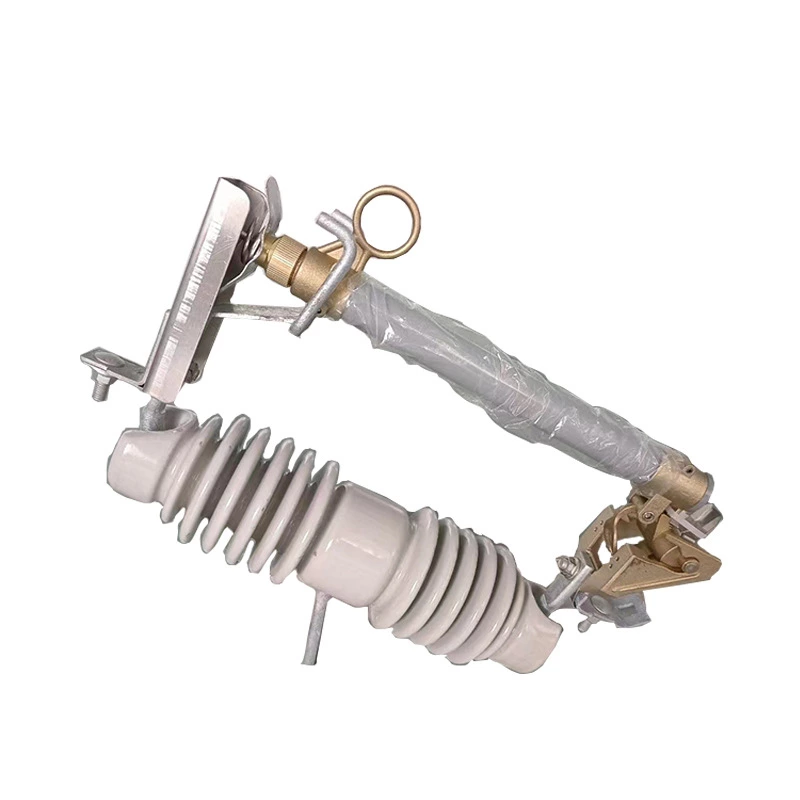Technical Guide For Standardized Operation Of Drop-out Fuse Cutouts
1. High Voltage Fuse Preparation before operation
1. Equipment status check
1) Check the line double number and equipment nameplate parameters, and confirm that the rated current (≤200A) and breaking capacity (≥12.5kA) match the system requirements
2) Check the appearance of the melting tube: surface carbonization The area shall not exceed 20%, the gas-generating material shall not crack, and the reserved length of the fuse tail shall be ≥150mm
3) Measure the contact resistance of the contact: Use a micro-ohmmeter for detection, and the resistance shall be ≤500μΩ (including the lead contact part)
2. Safety measures implemented
1) Wear Class II insulating gloves (voltage resistance 17kV) and goggles (light transmittance ≥ 89%)
2) Set up a restricted area for work: Set up a temporary fence with a radius of 1.5m around the fuse
3) Self-test of the tester: When using a rotary tester, first verify whether the sound and light signals are normal on the live equipment.
2. Standardized operation Workflow
1. Power outage operation (power off)
... The operating rod is made of epoxy resin, with an effective insulation length of ≥1.8m
② Breaking order: middle phase (phase B) → leeward side phase (phase C) → windward side phase (phase A)
③ Operation method: hook the pull ring at the upper end of the fuse tube, apply a pulling force of 30-50N, and pull down at a uniform speed along the axis of the fuse tube. The operating angle is controlled at 45°±5°
Step 3: Drop confirmation
The drop speed of the fuse tube must be less than or equal to 0.8m/s, the angle between the final stop position and the vertical line must not exceed 30°, and the contact separation distance should be no less than 150mm.
2. Power supply operation (closing)
Step 1: Melting tube inspection
① Visually confirm that there is no metal splashing on the inner wall of the melting tube, and the quartz sand filling volume is ≥ 85% of the tube cavity volume
② Measure the DC resistance of the fuse: the deviation from the nominal value is ≤±3%
Step 2: Closing operation
① Operation sequence: windward side phase (phase A) → leeward side phase (phase C) → middle phase (phase B)
② Operation method: The operating rod supports the lower end of the melting tube and pushes the duckbill contact at an acceleration of 2-3m/s². There is an obvious mechanical locking sound when the switch is closed
③ Contact pressure detection: The spring compression after contact crimping should be ≥8mm, corresponding to a contact pressure of 50-70N step
3: Conductivity verification
Use a clamp ammeter to measure the load current, the three-phase imbalance is ≤10%, and the axial vibration amplitude of the fuse is ≤2mm
3. Key points for special working conditions
1. Night operation
① Use LED cold light source for lighting, the distance between the lamp and the charged body shall be ≥3m
② Focus on monitoring arc color: Normally it is bluish white (temperature 3000-4000K). If it is orange-red (temperature ≤2000K), the operation must be stopped immediately
2. High-altitude operation
① When the altitude exceeds 2000m, the operating speed is reduced by 30%
② Correction formula for the melting tube drop angle: θ=30°×(P0/P)^0.5 (P is the actual atmospheric pressure)
3. Post-fault operation
① Single-phase fuse processing: Adopt the strategy of "first disconnect the non-fault phase, then replace the fault phase" to avoid induced voltage shock
② Melt pipe jam treatment: Use a special vibrator (amplitude ≤ 0.5mm) to release the mechanical lock, and prohibit human knocking
IV. Post-operation inspection
1. Mechanical status
... 2. Electrical parameters
Contact voltage drop ≤50mV (100A test current)
Insulation resistance ≥1000MΩ (2500V megohmmeter)
3. Environmental recovery
Remove free carbon from the surface of the melting tube (wipe with anhydrous ethanol)
Restore equipment spacing: phase distance ≥350mm, distance to the ground ≥2.5m
62271-201 standard)
It is forbidden to use metal parts to touch the fuse (it may cause secondary discharge)

